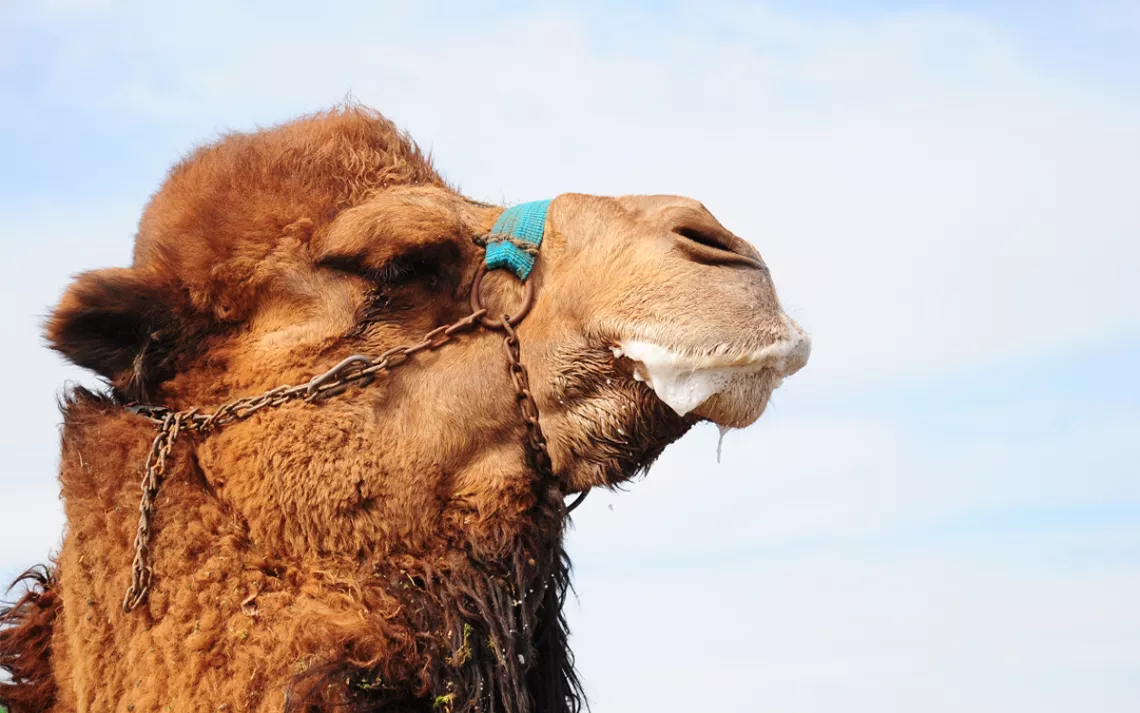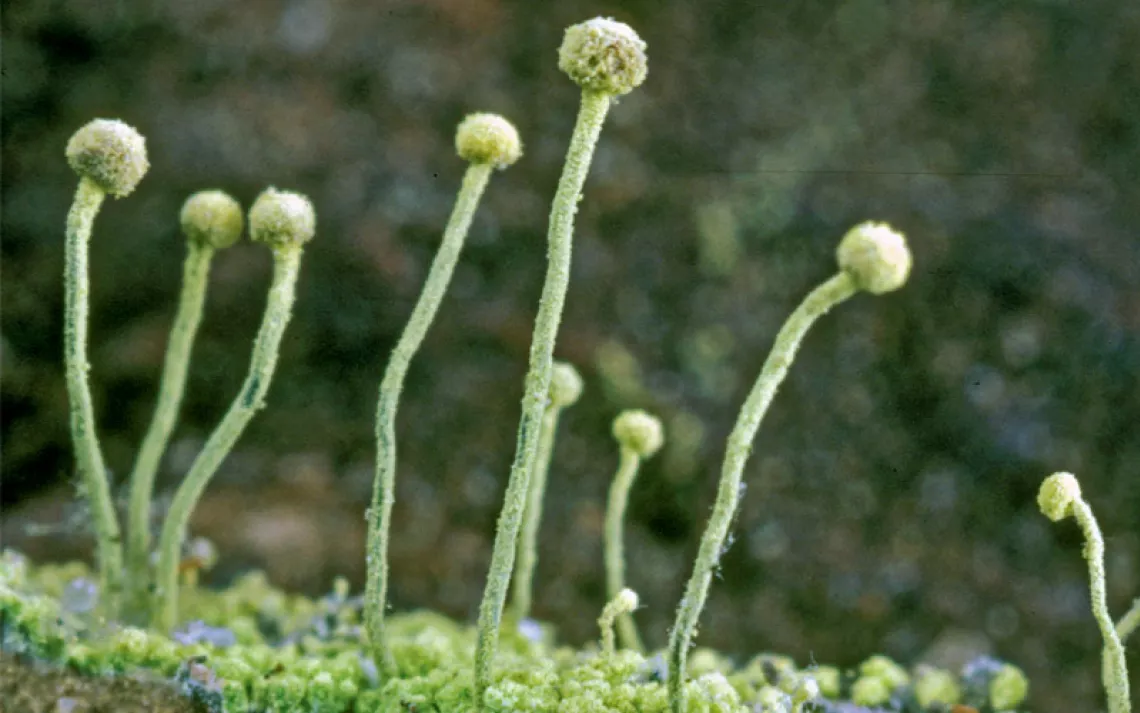New Spit Answers Raise More Spit Questions
Mucin, a key building block of saliva, is extremely good at evolving

Camel saliva is pretty interesting from an evolutionary perspective, but wait 'til you hear about ferret spit. | Photo by bbrn/iStock
Saliva is an old technology. It would be perfectly reasonable to assume that, like hearts or spines, it’s divergently evolved—an inheritance from a single primordial ancestor that evolved spit in order to better digest whatever it put into its mouth, then prospered and reproduced greatly as a result.
That is true. But not always. A new paper published this week in Science Advances proves what has long been suspected—saliva also convergently evolved, in much the same way that flight did. Just as birds, bats, pterosaurs, and insects are the result of different creatures evolving the capacity to launch themselves into the air and not immediately fall to the ground, saliva—or, more specifically the mucins within it, which are a key source of saliva’s viscosity—has independently evolved from other proteins, over and over again.
This discovery is the result of nearly a decade of collaboration that began when Omer Gokcumen, an evolutionary anthropologist, rang up Stefan Ruhl, a professor of oral biology at the University at Buffalo School of Dental Medicine.
Gokcumen had recently begun teaching at the university. He was obsessed with how genes evolve, and in Ruhl’s work, he saw signs of what he hoped was an unexplored opportunity to study the impact of gene duplication. Ruhl studied oral health, the way it developed, and the way that it could go horribly wrong when it intersected with bacterial infection, chemotherapy, or other factors. But he had also published a comparison of human, chimpanzee, and gorilla salivary proteomes in the journal Molecular Biology and Evolution (Ruhl was surprised to find that while humans and great apes share 98 percent of their genome, their saliva is not much alike at all). When the two began working together, it was the beginning of a beautiful partnership. “Basically, by training, I'm a dentist,” says Ruhl. “Later on, I became an oral biologist—but there is a long way to bridge the gap between our discipline and evolutionary genetics. I've tapped into a totally new field, which I enjoy very much.”
Their two labs joined forces and began research into mysteries like the evolution of alpha-amylase—which helps humans (and dogs and mice) digest starchy food—and how a mucin known as Muc7 possibly evolved in an extinct ancestor of modern humans several hundred thousand years ago. This recent study began with the team collecting saliva samples from 49 species of mammals via “passive drooling.” Jun Qu, a professor of pharmaceutical sciences who heads the University at Buffalo’s proteomics analysis lab, and PhD student Sichen Shen analyzed the samples using a mass spectrometer. Then Gokcumen and another PhD student, Petar Pajic, cross-referenced the results to genomes on file at the National Center for Biotechnology Information.
It was the kind of research that would have been prohibitively expensive just a few years ago. “Let's say we go to a rainforest to find a new species of frog,” says Gokcumen. “It was billions of dollars or hundreds of millions of dollars to assemble the genome 20 years ago. Now it's like $10,000, minus the labor costs.”
The team found that in 15 cases, new mucins appeared to have evolved independently. Several species, like seals and camels, evolved new mucins in their saliva more than once. Ferrets appear to have evolved new mucins at least four separate times, something that may be connected to the fact that, as carnivores, they have extremely mucin-heavy saliva compared with that of herbivorous or omnivorous species. “There's something going on that actually makes them evolve this much-richer ‘mucinome’ if you will,” says Gokcumen, before declining to speculate further.
Research into mucins is more complicated than many other forms of lab work: The molecules are unruly, blobby, and have a tendency to clog laboratory pipettes. They also occupy a repetitive part of the genome. Gokcumen compares sequencing a genome to a jigsaw puzzle of a landscape; scientists mapped the most distinctive sections first and are now stuck filling in a nearly featureless blue sky. That blue sky is finally being assembled—the entire human genome, from telomere to telomere, was only published in April of this year.
In the past few years, more and more research has appeared showing that convergent evolution is more common than realized—organisms inherit genes from generation to generation, but they’re also in dialogue with their environment. As an important interface between the body and the outside world, mucin genes may be particularly prone to convergent evolution, possibly making them one of the most rapidly evolving gene categories.
If you’re a sentient being, odds are high that mucins coat nearly every part of you, from mouth to eyeball to respiratory tract to digestive tract to genitals. They act as an intermediary between your person and everything the world throws at it; mediate signaling between the epithelial cells that cover your skin, organs, and veins; and generally smooth things along.
As a dentist, Ruhl has seen how awful life can get when their work is disrupted. Patients without enough mucins in their saliva struggle to eat, swallow, even speak. Their teeth disintegrate over time. Artificial saliva is something of a holy grail—the real, healthy version is made up of thousands of proteins that protect the mouth and throat from microbial insult—and versions currently on the market are ineffectual gels mixed with electrolytes. “The one who invents that will become very rich,” says Ruhl, of bioengineered spit.
Yet mucins do not get the respect they deserve. Ruhl gets that a hundred-plus years of scientific discoveries, going back to when Robert Koch discovered that the tuberculosis bacterium could be transmitted through bodily fluids, have given spit a bad rap. But as science evolves, so does understanding. “Slime is icky, OK,” says Ruhl. “I encounter it as a dentist. People are ashamed of opening up their mouths. The dental professional is looked down upon because we are working in such a disgusting environment. Nobody wants that. And yet mucus is the most wonderful substance in the world.”
 The Magazine of The Sierra Club
The Magazine of The Sierra Club







